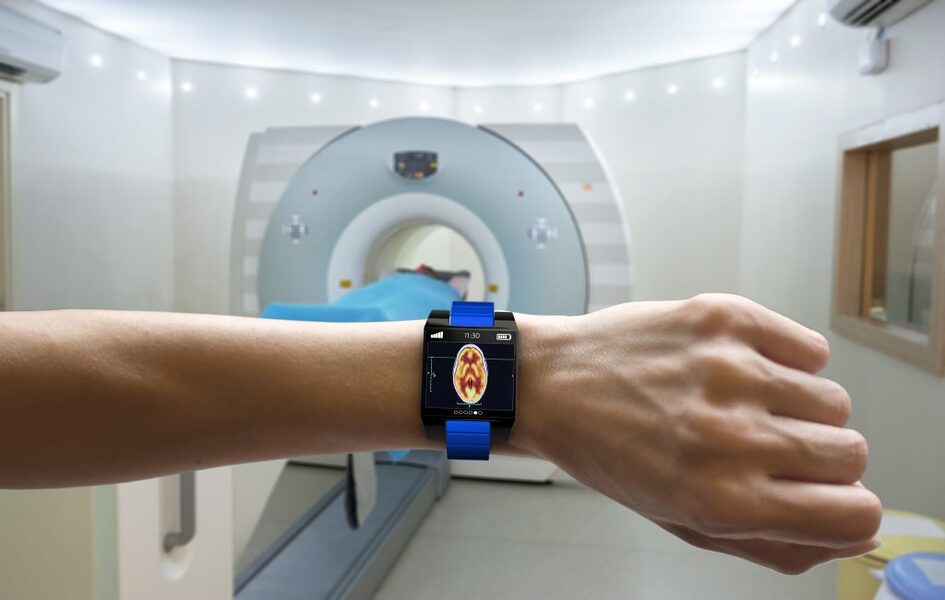Introduction:
Wearable medical devices have revolutionized the healthcare industry by providing patients with real-time data about their health conditions. These devices are designed to be worn on the body and collect information about vital signs, physical activity, and other health metrics. This data can later be used to track physical activity, monitor vital signs, and even provide real-time health insights. Wearable medical devices offer several benefits, such as improved patient outcomes, increased patient engagement, and reduced healthcare costs.
In this blog, we will explore the different types of wearable medical devices, their benefits, their potential future role in the healthcare industry, and their impact on the healthcare industry.

Types of Wearable Medical Devices:
There are several types of wearable medical devices available in the market today, such as:
- Smartwatches: In recent years, Smartwatches have become popular and are used to track physical activity, heart rate, sleep, and other health metrics. Some smartwatches also have features that can monitor blood oxygen levels, ECG, and blood pressure.
- Fitness Trackers: The fitness trackers have sensors that can help us monitor heart rate, sleep, and other health metrics and also track physical activity, such as steps taken, calories burned, and distance walking or running.
- Medical Alert Systems: Medical alert systems help people who may require emergency medical attention. These devices generally come as wearable bracelets or necklaces, which patients wear around their necks or wrists. In an emergency, the user can press a button on the device to summon help.
- Continuous Glucose Monitoring Systems: Continuous glucose monitoring systems are designed to help people with diabetes manage their blood sugar levels. Small sensors from the devices are placed under the skin to measure glucose levels in the interstitial fluid.
Benefits of Wearable Medical Devices:
Wearable medical devices offer several benefits, such as:
- Improved Patient Outcomes: Wearable medical devices can provide patients with real-time data about their health conditions, which can help them make informed decisions about their health. By sharing the information obtained with healthcare providers, they can use it to make more accurate diagnoses and develop personalized treatment plans.
- Increased Patient Engagement: Wearable medical devices can help patients become more engaged in taking care of their health by providing them with tools to monitor their health and make lifestyle changes. This increased engagement can lead to better adherence to treatment plans and improved health outcomes.
- Reduced Healthcare Costs: Wearable medical devices can help reduce healthcare costs by preventing hospital readmissions and reducing the need for emergency care. These devices can also help healthcare providers identify potential health problems early, leading to more cost-effective treatment.
Impact of Wearable Medical Devices on Healthcare:
Wearable medical devices have had a significant impact on the healthcare industry, such as:
- Remote Patient Monitoring: Wearable medical devices allow healthcare providers to monitor patients remotely, which can help them identify potential health problems before they get worse. Thereby leading to better patient outcomes and reduced healthcare costs.
- Personalized Medicine: Wearable medical devices can provide healthcare providers with real-time information about a patient's health, from which we can develop personalized treatment plans. This Personalized approach can lead to better health outcomes and improved patient satisfaction.
- Data Analytics: Wearable medical devices generate a large amount of data, through which we can develop insights about patient health and healthcare trends. With the help of the data, we can improve healthcare delivery and reduce healthcare costs.
Future Role of Wearable Medical Devices:
The future role of wearable medical devices is vital as technology continues to evolve and healthcare becomes more patient-centric. Some potential future uses of wearable medical devices include:
- Disease Management: Wearable medical devices may be used to manage chronic diseases such as diabetes, heart disease, and COPD. These devices can provide real-time data about a patient’s condition and can be used to adjust treatment plans as needed.
- Telemedicine: Wearable medical devices may be used in telemedicine, allowing patients to receive remote care from healthcare providers. These devices can collect data about a patient's condition in real-time and share it with healthcare providers.
- Preventative Care: Wearable medical devices may be used for preventative care, helping patients identify potential health problems before they become serious. For instance, a patient can be alerted to hypertension with a blood pressure monitor before it becomes a threat.
- Clinical Trials: Wearable medical devices may be used in clinical trials to collect data about the safety and efficacy of new drugs and treatments. These devices can provide real-time data.
Conclusion:
Wearable medical devices have transformed the healthcare industry by providing patients with real-time data about their health conditions. These devices offer several benefits, such as improved patient outcomes, increased patient engagement, and reduced healthcare costs. Data analytics, remote patient monitoring, and personalized medicine are the major features of wearable medical devices that have revolutionized the healthcare industry.
Opinions of MMPeers:
“Wearable Medical Devices are IoT (“internet of things”) or smart devices worn directly on the body and are used to track and monitor various vital signs, such as heart rate, blood pressure, and oxygen levels, via health apps. Examples of wearable medical devices are heart rate monitor, smartwatch, Fitbit etc.” Dr. Daniel.
“Wearable medical devices/technology allow physicians to track patient activity and data to help doctors better understand how their patients are feeling and managing their diseases. Wearable medical devices may potentially allow physicians to detect major health events and detect diseases in their early stages. Thereby providing their patients with the necessary treatment on time which could end up increasing their lifespan and ultimately saving their patient's life.” Dr. Peter.
Are you a physician or healthcare practitioner?
Become a My Medical panel member and explore the many benefits of joining. Start your paid medical survey journey here - sign up










